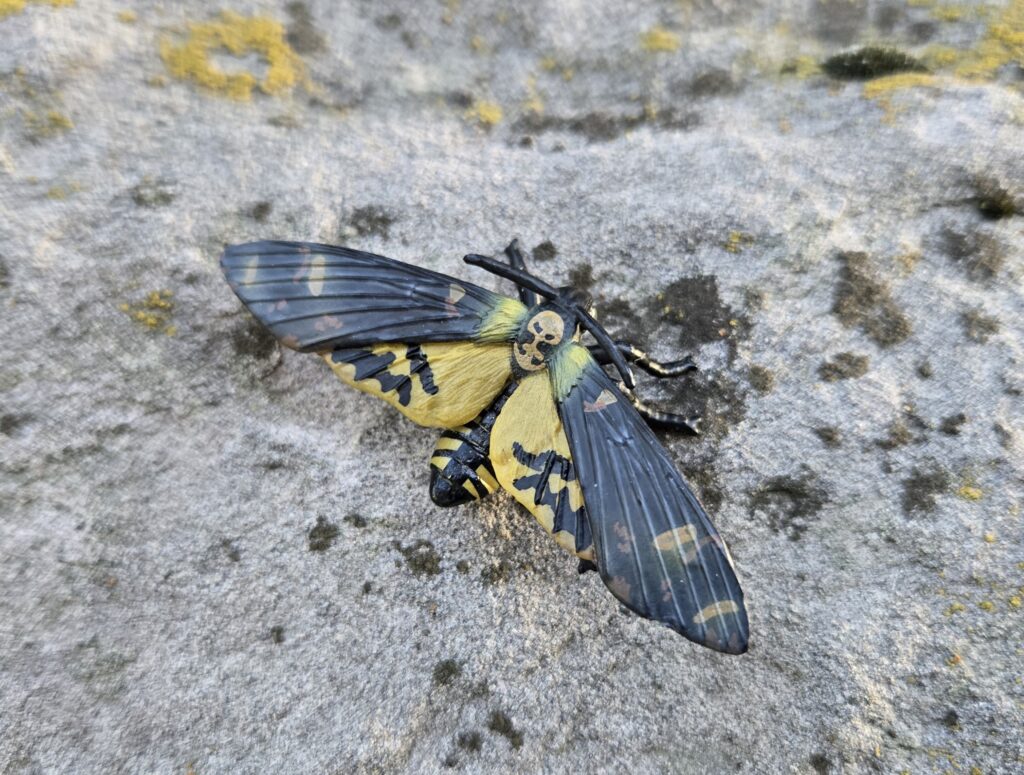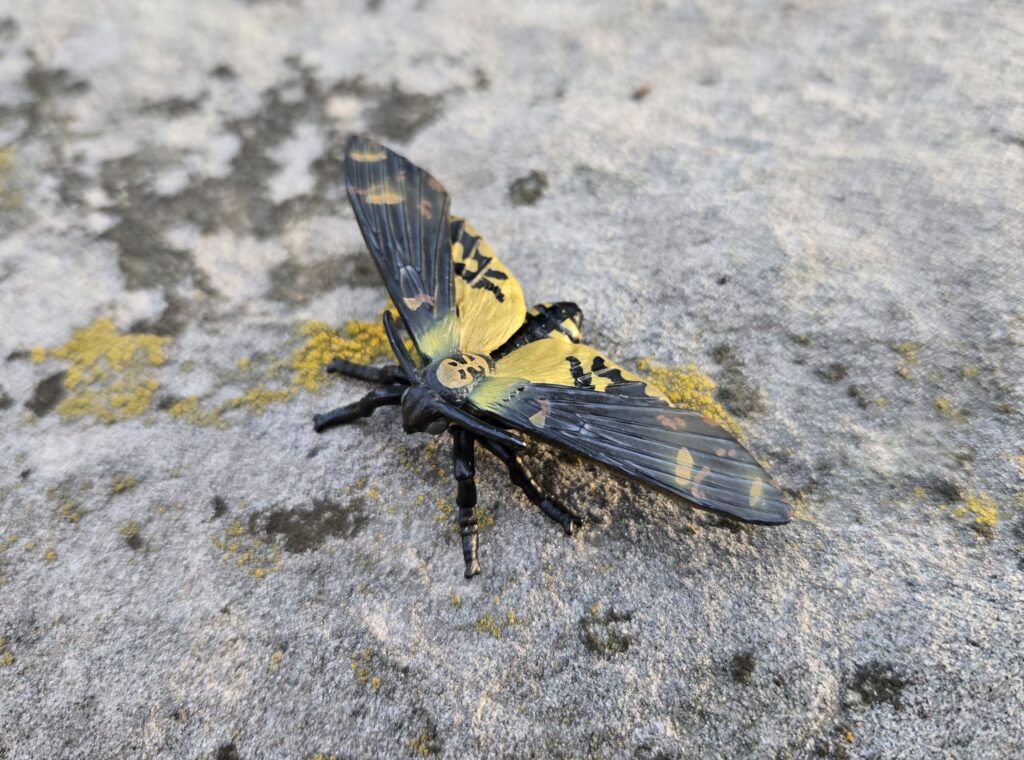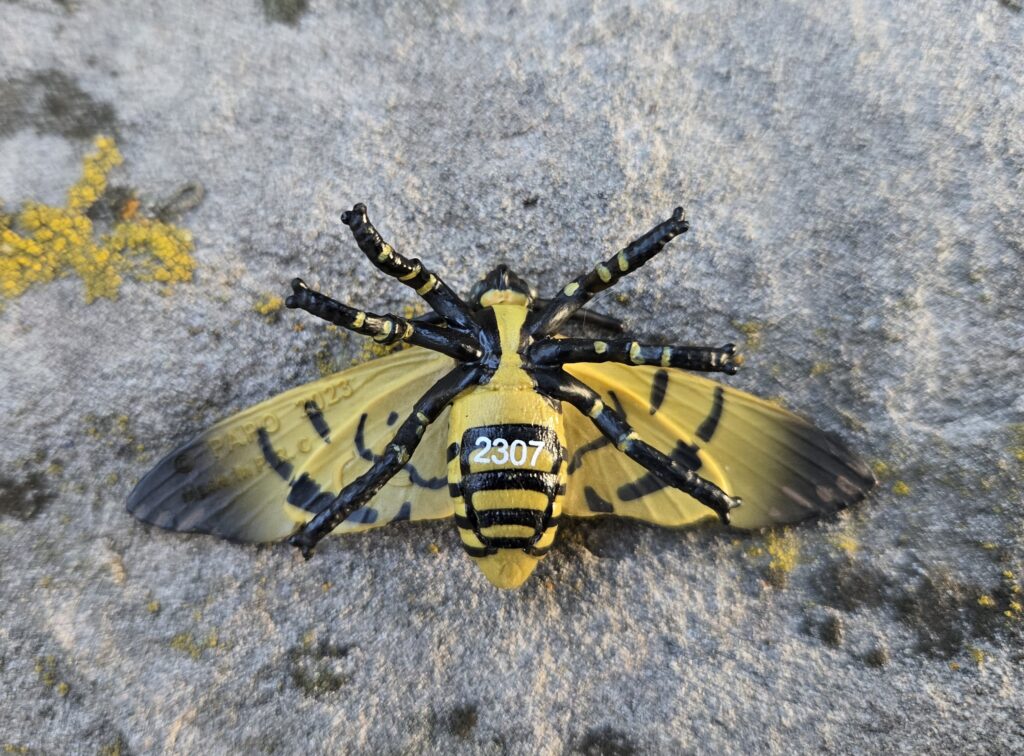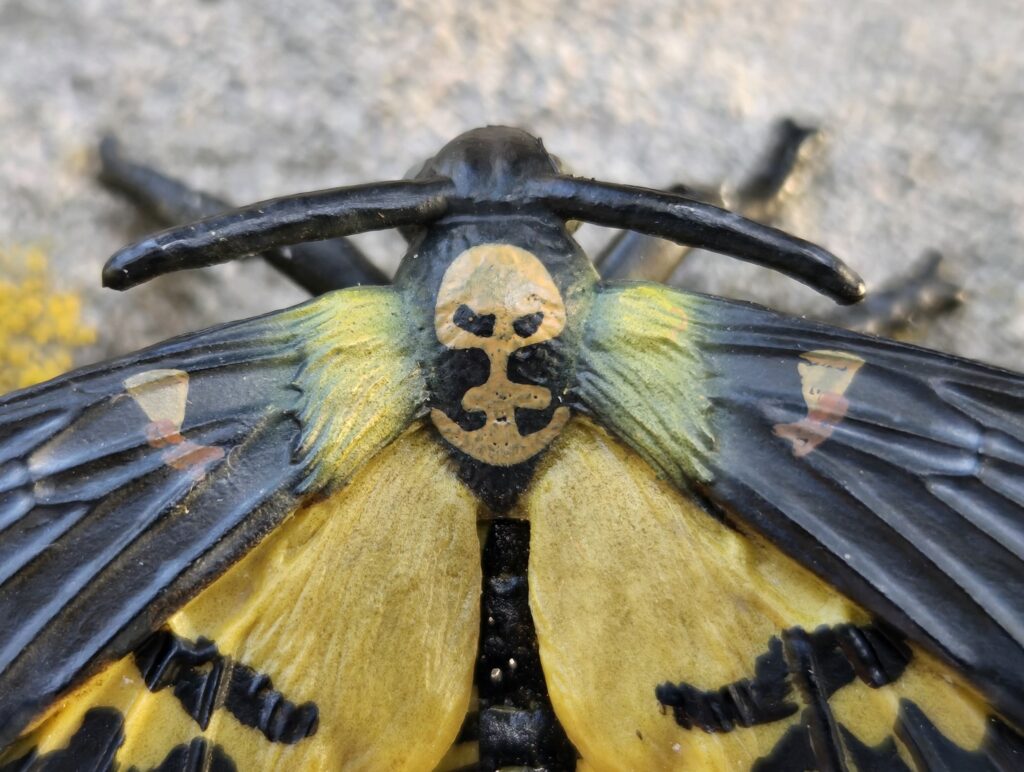The genus Acherontia, whose members are commonly referred to as death’s-head hawkmoths, contains three species broadly distributed in Eurasia and Africa. The greater death’s-head hawkmoth (A. lachesis), which is the largest of the three, occurs in Central and East Asia to Japan and the Philippines; it has also recently become established in Hawaii. The lesser death’s-head hawkmoth (A. styx) is widespread in Asia, from Arabian Peninsula east to China, Japan, and Malaysia. The third species, the African death’s-head hawkmoth (A. atropos), occurs throughout much of mainland Africa (except for deserts), Madagascar, and the Arabian peninsula, although in summer they migrate into Europe going as far north as Scandinavia. Appropriate for our theme for the month, numerous superstitions revolve around Acherontia species, mainly because of the skull-like markings on the prothorax of the adult moths. Death’s-head hawkmoths have appeared numerous times in horror literature, cinema, paintings, and even video games, including Bram Stoker’s Dracula (the novel), The Mothman Prophecies, John Keats’ poem ‘Ode to Meloncholy’, the 1968 film The Blood Beast Terror, Susan Hill’s 1971 Gothic horror novel I’m the King of the Castle, and the 2018 survival horror video game Remothered: Tormented Fathers, just to name a few. However, when it comes to pop culture references, most people are probably most familiar with the moth’s association with the 1988 novel A Silence of the Lambs and its 1991 film adaptation. Interestingly, there have been several inconsistencies with the moth in the novel and film. In Chapter 14 of the novel, the moth was a black witch (Ascalapha odorata), an erebid moth totally unrelated to hawkmoths. However, in Chapter 33, the moth is referred to as a death’s-head hawkmoth. To complicate things, the film’s script refers to A. styx, and the entomologist in the scene refers to it as A. styx, although the moth that was actually shown in the film was A. atropos. Also interesting, is that the entomologist in the film stated that whoever reared the moth, ‘fed him honey and nightshade’ even though only adults eat honey. The larvae, however, do feed on plants in the nightshade family (Solanaceae). For my first contribution to the Blog’s annual Halloween-themed reviews in October, we will be looking at the 2023 death’s-head hawkmoth produced by Papo for their Garden Animals line. Papo simply marketed this figure as a ‘moth’ but the double-skull markings on the prothorax suggests A. atropos, as does the species’ distribution, as Papo tends to favor local fauna and A. atropos is the only species in the genus that regularly gets into continental Europe.

The total width of the figure is about 7.5 cm. If spread like a mounted specimen, the wingspan would come to approximately 8.0 cm, which would put it in 1:1 scale for a small specimen or up to 1:1.6 for a large specimen (normal range 8-13 cm).

The moth is sculpted in a resting posture, with its wings held slightly roof-like over its body. The six legs are sprawling, but the body is lifted above whatever surface it is resting on. The coiled proboscis is sculpted on the underside of the head. The wing venation isn’t quite 100% correct, but it’s surprisingly close!

Sphingids have rather intricate patterns to their wings and bodies, even when at quick glance some may appear dull colored. This moth features a blend of brown and goldenrod-yellow, with darker legs; the pattern on the forewings is quite simplified, but not unexpected on a toy of this size. While not fully exposed, the color pattern on the hind wings and abdomen are correct. Overall not bad and clearly recognizable for the genus. Of course, the hallmark feature is the skull-like macula on the prothorax. The three Acherontia species have different shapes to their skulls, and on this figure it looks most like A. atropos, with an extension of the lower part of the skull that looks like a mouth or possibly a mirror image of the skull (hence, ‘double-skull’).

Death’s-head hawkmoths are fairly rare as toys, and to the best of my knowledge this is the first figure of A. atropos by a major company since the vintage 1989 toy by Funrise Toys, which is very simplified in terms of color. Forum member Jetoar also made this species for the short-lived Amazing Moths line of Paleo-Creatures. Kaiyodo made a larva of A. lachesis while Ikimon produced an adult (the latter of which is simply a photograph embedded in acrylic). For collectors of interesting taxa, this moth comes highly recommended. It’s a good size, is well made, and should still be readily and widely available.

Disclaimer: links to Ebay and Amazon on the AnimalToyBlog are affiliate links, so we make a small commission if you use them. Thanks for supporting us!



